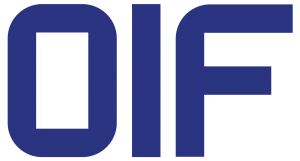OIF Announces Board Elections and New Project Starts
The Optical Internetworking Forum held their fourth quarter meeting this month in Auckland, New Zealand, resulting in several new project starts and board elections. The OIF also held an interactive educational workshop with Spark New Zealand, a New Zealand-wide communications service provider.
“The OIF continues to work with other standards bodies and the industry to identify a wide range of technology needs that cross the entire optical and electrical ecosystem,” said Karl Gass of Qorvo and the OIF’s Physical Link Layer working group optical vice-chair. “The OIF remains committed to providing technology direction that provides a path to interoperability in a pre-competitive environment. The projects started during the Q4 meeting demonstrate the OIF’s commitment to work with other standards bodies in the industry.”
400ZR Interoperability
This new project will develop an implementation agreement for 400G ZR and short-reach DWDM multi-vendor interoperability. It is relevant for router-to-router interconnect use cases and is targeted at (passive) single channel and amplified DWDM applications with distances up to 120 km. This project should ensure a cost-effective and long-term relevant implementation using single-carrier 400G, coherent detection and advanced DSP/FEC algorithms.
Common ACO Electrical I/O
The project will define the ACO electrical I/O independent of the choice of form factor and optical carrier count for 45 Gbaud and 64 Gbaud per-carrier applications. This project would build upon the success of the CFP2-ACO but is form factor agnostic so that it could be applied to multiple applications such as CFP4, CFP8, QSFP, micro QSFP and OFSP.
Coherent Modem Management Interface
Members have requested that the industry combine the coherent modem management interface specifications [4″x5″ LH MSA, CFP2-ACO, CFP2-DCO, Flex-Coherent, etc.] into a standalone document. OIF leadership, working in conjunction with the CFP MSA group, is inviting companies to participate in creating a complementary Normative document.
High Baud Rate Coherent Modulation Function
This project will define a small form factor component implementation agreement that combines the high baud-rate PMQ (HB-PMQ) modulator plus the RF drive functions into a single component. This new component will be used in conjunction with a high baud Integrated Coherent Receiver (ICR), a micro Integrable Tunable Laser Assembly (ITLA) and a coherent DSP, to implement a high performance coherent modem.
OIF Day with Spark New Zealand
The OIF continues to leverage the unique OIF Day program platform to reach out to key industry players for technical and strategic input. In conjunction with the Forum’s recent quarterly meeting in Auckland, the OIF hosted a half-day interactive and educational workshop featuring OIF and Spark New Zealand subject matter experts. The event achieved the objectives of introducing OIF work projects to this local service provider and obtaining valuable input on regional business and technical network challenges.
OIF Election Results
Dave Brown of Nokia was re-elected to the Board for a two-year term and appointed as president. Re-elected to one-year terms were Junjie Li of China Telecom and Dave Stauffer of Kandou Bus. Stauffer will continue to serve as secretary/treasurer. Jonathan Sadler of Coriant and Nathan Tracy of TE Connectivity were elected to the board for two-year terms. Tracy was appointed as vice president of marketing. Tom Issenhuth of Microsoft was appointed as vice president and Ian Betty of Ciena continues to serve on the Board.
Newly elected were Klaus-Holger Otto of Nokia as Technical Committee chair, Ed Frlan of Semtech as Technical Committee vice chair and Jeffery Maki of Juniper Networks as chair of Physical Layer User Group Working Group.
Brian Holden of Kandou Bus, Market Awareness and Education Committee co-chair, Physical and Link Layer; and Lyndon Ong of Ciena, MA&E Committee co-chair, Networking were both re-elected.
About the OIF
The OIF facilitates the development and deployment of interoperable networking solutions and services. Members collaborate to drive Implementation Agreements (IAs) and interoperability demonstrations to accelerate and maximize market adoption of advanced internetworking technologies. OIF work applies to optical and electrical interconnects, optical component and network processing technologies, and to network control and operations including software defined networks and network function virtualization. The OIF actively supports and extends the work of national and international standards bodies. Launched in 1998, the OIF is the only industry group uniting representatives from across the spectrum of networking, including many of the world’s leading service providers, system vendors, component manufacturers, software and testing vendors. Information on the OIF can be found at http://www.oiforum.com.

